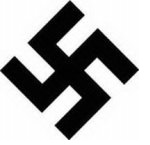Two recent U.S. Supreme Court decisions in Matal v. Tam,[1] decided in 2017, and Iancu v. Brunetti,[2] decided this past May, both dealt with registration of trademarks under 15 U.S.C. §1052(a) (§2(a)) that ran afoul of the First Amendment’s freedom of speech clause.
2(a) reads:
No trademark by which the goods of the applicant may be distinguished from the goods of others shall be refused registration on the principal register on account of its nature unless it
(a) Consists of or comprises immoral, deceptive, or scandalous matter; or matter which may disparage or falsely suggest a connection with persons, living or dead, institutions, beliefs, or national symbols, or bring them into contempt or disrepute; or a geographical indication which, when used on or in connection with wines or spirits, identifies a place other than the origin of the goods and is first used on or in connection with wines or spirits by the applicant on or after one year after the date on which the WTO Agreement enters into force with respect to the United States.
The “scandalous” clause in orange underlined-italics was struck down in Brunetti; the “disparagement” clause in blue underlined-italics was struck down in Tam. The only remaining valid portion of §2(a) in a post-Tam/Brunetti world is the geographical indication ban.
A full discussion of Tam is found here; a full discussion of Brunetti is found here.
Effectively, removing both scandalous and disparagement clauses of §2(a) has opened the floodgate of new trademark application seeking registration on a previously prohibited marks. For example, there are 259 pending applications with the word FUCK in the mark. SOBER AF CLOTHING® was registered July 9, 2019, as U.S. Registration No. 5,802,302, two months after Brunetti was handed down, in International Class 25, for t-shirts. FAGGOT was published for opposition on October 22, 2019, and presumably will be registered on the Principal Register after the 30-day opposition period has ended. Also, since it was filed under §1(b), intent-to-use, the applicant still needs to file proof of use papers in International Class 3, for cosmetics & cosmetic preparations.
It should be noted that free speech is not absolute. As a matter of fact and law, there are constitutionally permissible limits on free speech. For example, false statements,[3] child porn,[4] obscenity,[5] fighting words,[6] and presidential threats[7] are valid exceptions to First Amendment protections.

Furthermore, trademark registration of arguably free speech trade names and logos must still meet the registration requirements. If a mark is not used in commerce, or is likely to confuse consumers as to the source of the goods or services, or fails to function as a mark, it can be permissibly refused registration. For example:
An applicant, Snowflake Enterprises, LLC, filed the swastika design mark application (Serial No. 87/503,998). It was refused by the Examiner in an Office Action issued on September 19, 2019, because the mark fails to function as a mark to indicate source of goods or services and to distinguish those goods or services from others (TMEP 904.07(b)). The applicant has six months to respond to the Office Action or the application will be abandoned.
[1] 582 U.S.___, 137 S. Ct. 1744 (2017) (slip op.), affirming In re Tam, 808 F.3d 1321 (Fed. Cir. 2015), cert. granted, 137 S. Ct. 30 (2016).
[2] 588 U.S.___ (2019), affirming In re Brunetti, 877 F.3d 1330 (Fed. Cir. 2017), cert. granted, 139 S. Ct. 782 (2019).
[3] See Gertz v. Robert Welch, Inc., 418 U.S. 323 (1974) (there is “no constitutional value in false statements of fact”).
[4] See New York v. Ferber, 458 U.S. 747 (1982) (speech is unprotected if it (1) visually depicts children below the age of majority and (2) performing sexual acts or lewdly exhibiting their genitals).
[5] See Miller v. California, 413 U.S. 15 (1973) (speech is unprotected if (1) the average person, applying contemporary community standards, would find the work, taken as a whole, appeals to the prurient interest; and (2) the work depicts or describes, in a patently offensive way, sexual conduct or excretory functions specifically defined by applicable state law, and (3) the work, taken as a whole, lacks serious literary, artistic, political, or scientific value).
[6] See Chaplinsky v. New Hampshire, 315 U.S. 568 (1942) (“fighting words” is unprotected speech); Brandenburg v. Ohio, 395 U.S. 444 (1969) (speech is unprotected if it is “directed to inciting or producing imminent lawless action and is likely to incite or produce such action”).
[7] See 18 U.S.C. §871.

1 thought on “Trademarks Post-Tam & Brunetti”
Comments are closed.